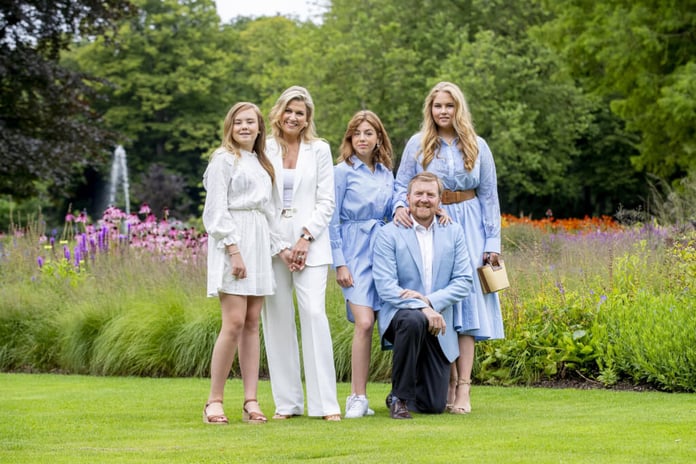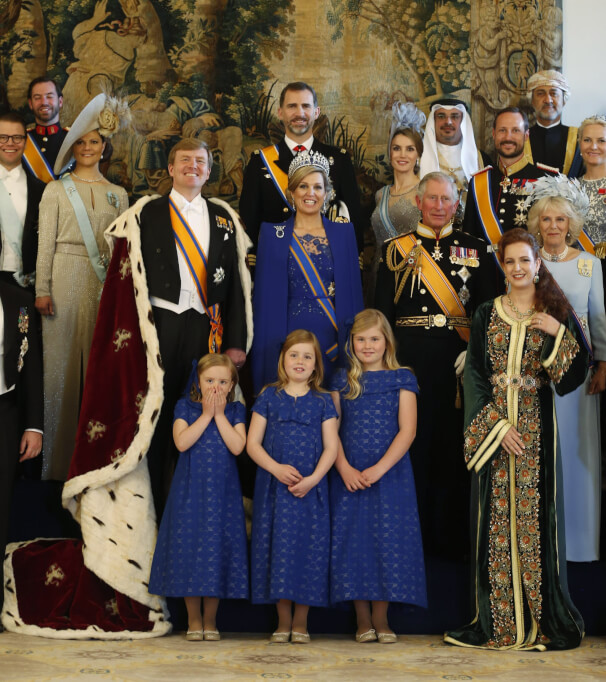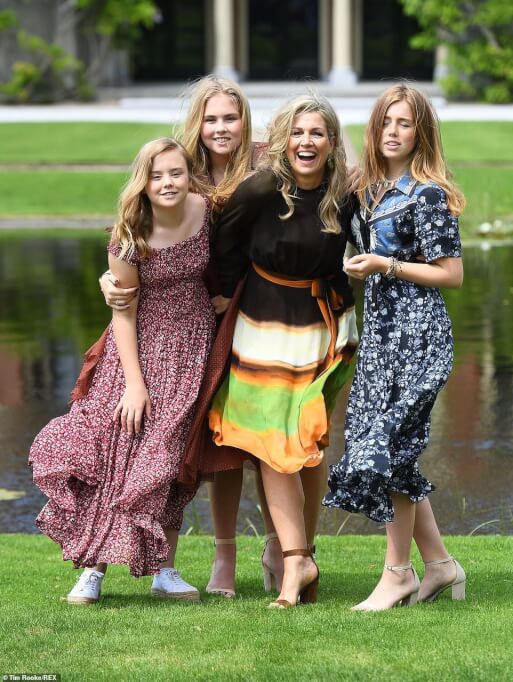The Orange-Nassau dynasty has ruled the Netherlands for centuries. Among the scandals that accompany them are stories of excessive spending and wealth. However, they are among the most beloved rulers in the world, especially when it comes to European courts. Matriarchy is only on hiatus because King Willem-Alexander again has three daughters. Once upon a time, in the future, the Queen, currently sixteen-year-old Princess Catharina-Amalia, smiles at the Netherlands again.

The Orange-Nassau dynasty is an ancient noble family originally from central Germany that has ruled the Netherlands for centuries. The first king of this country, Willem Alexander, became king at the Congress of Vienna in 1815 after the fall of Napoleon Bonaparte. He was succeeded by his son Willem II, and he by Willem III. It is from this ruler, who was on the throne from 1849 to 1890 in the Dutch royal family that begins a tradition that has persisted to this day, and that is inheritance through the female line.

A symbol of resistance to the Nazi occupation
Willem III married in 1839, his cousin Princess Sophia of Württemberg, with whom he had three sons. However, Queen Sophia died in 1877, so the king remarried. From his marriage to Princess Emma he had only one child, a daughter Wilhelmina. By the time King Willem III died in 1890, of all his children, only ten-year-old Wilhelmina was alive. Three sons from the king’s first marriage died in their youth, before they could marry or have children.
The crown thus passed to Queen Wilhelmina. The regent of the minor Wilhelmina was her mother until her eighteenth birthday. Wilhelmina proved to be an extremely capable ruler, who ruled the Netherlands with a firm hand for almost six decades, leading the country through a series of crises, 20th century trubulence and two world wars, and is still considered a symbol of resistance to Nazi occupation.

Wilhelmina married Duke Henry of Mecklenburg-Schwerin. It is believed that this marriage was without love and that it was concluded only because Wilhelmina would give birth to an heir. After a series of abortions, the queen gave birth to her only child, a girl, Princess Juliana, just eight years after the wedding.

And so, after Wilhelmina’s abdication in 1948, the crown again crossed the female line, and the Netherlands received Queen Juliana. And she also had only female children – four girls, Princess Beatrix, Irene, Margriet and Christina, so after her abdication in 1980, the crown passed to her eldest daughter.
Queen Beatrix of the Netherlands from Orange-Nassau was the monarch at the head of the Netherlands from 1980 until her abdication on April 30, 2013, and unlike her predecessors, she has three sons. When Willem-Alexander was born, in 1967, he was the first son born to the Dutch royal family since 1851 and the birth of his great-uncle Prince Alexander, the youngest son of Willem III.
King Willem-Alexander has ruled the Netherlands since 2013, when his mother ceded the throne to him, following a tradition of abdication that is common in their dynasty. He is the first king to head this European state since 1890 or the first man on the Dutch throne after 123 years. But matriarchy is, in fact, only on pause, because the king has three daughters again. Once upon a time, in the future, the Queen, currently sixteen-year-old Princess Catharina-Amalia, smiles at the Netherlands again.

The Dutch pay for luxury out of their own pockets
They consider this dynasty to be one of the richest royal families in the world, whose travels, arranging numerous houses, as well as maintaining the yacht, are paid for out of their own pockets by the Dutch. Unusual in many ways, they are a favorite of the people who, in spite of everything, approve of all their actions. Unlike other royal families, representatives of the Dutch royal family do not have a coronation as such.
Since there is no state church there, there is no one to put the crown on the head of the future ruler. So it was for the last coronations, in 2013, when, after 33 years of service to the Dutch people, Queen Beatrix handed over the title to her eldest son Willem-Alexander. He then became the first man on the Dutch throne since 1890 and, at 46, the youngest European king.

After her abdication, which seems to be a normal occurrence in the Netherlands, as her mother, Queen Juliana, who ruled for 31 years, and her grandmother, Queen Wilhelmina, a new king in a nearby, 600-year-old church, did the same. he took the oath, holding the Dutch Constitution and before the members of Parliament, and the crown and other royal insignia were on the table beside him. The crown itself was made in 1840 from gilded silver and has on it fake pearls and jewels made of fish fibers, glass and colored foils.
The arrival of King Willem-Alexander at the head of the Dutch royal family pulled him right from the bottom of the drawer and a well-kept secret. So it was learned that in his student days he had a reputation as a seducer, as well as a fan of good parties and enormous amounts of beer, and he was fascinated by girls from Latin America. Therefore, no one was particularly surprised when he married an Argentine.

It was his marriage to Argentine Maxim that was under public scrutiny, just like his parents’ marriage on March 10, 1966. Namely, Queen Beatrix surprised everyone when she decided to get engaged to the German diplomat and aristocrat Claus von Amsberg. On the day of their wedding, mass protests broke out in the Netherlands, because the citizens did not like her move.
The problem was that Prince Claus was a member of the Hitler Youth organization as well as a Wehrmacht soldier, so his name was associated with Nazism. A smoke bomb was thrown at the procession itself, culminating in clashes with police. Best of all, Prince Claus soon became the most beloved member of the royal family, and his death in 2002 could not be regretted by the Dutch.

King Willem-Alexander had a similar situation after it was learned that Queen Maxima’s father, Jorge Zorreguietae, had served the Argentine military dictatorship for more than 30 years. Aware that by marriage she herself would receive the royal title, Maxima distanced herself from her parents, who were not present either at their wedding or at the enthronement of the new king and queen.
The carriage was made back in 1898

Today, Maxima is a favorite queen, and the people respect and love her even more than the king. Before becoming queen, she lived in New York and worked at one of the investment banks there. By marriage, she renounced that world, and devoted herself to new duties, especially in relation to the public good, as well as the motherly role. Maxima and Willem-Alexander have three daughters – Ariana, Amalia and Alexia – and it is the eldest, full name Catharina-Amalia, the future heiress to the throne.
Many say the two are an ‘invincible couple’, yet they resent them for the enormous wealth they have gained, as well as the privilege of not paying taxes. Interestingly, all members of the royal family receive fairly generous salaries, and the money for all expenses, travel, housekeeping or yacht maintenance comes from taxpayers ’pockets.
And when they have money, it is no wonder that they also ride in a golden carriage, which is exported from a special warehouse on Princess’ Day. Every year, on the third Tuesday in September, when Parliament officially begins its work, the Queen sits in a carriage and waves through the crowd.

The carriage was made back in 1898, at the end of the 19th century, when many people in the Netherlands were dissatisfied with the gap between the very poor and the very rich in Amsterdam. At the urging of one preacher, each citizen donated 25 cents, and with the money raised they wanted to buy a gift for the coronation of Queen Wilhelmina. The extravagant gift was in the end just a golden chariot, and although it was initially thought to stand only in a museum, the Queen decided to use it for her wedding to Prince Hendrik, in 1901. This tradition continues today.

